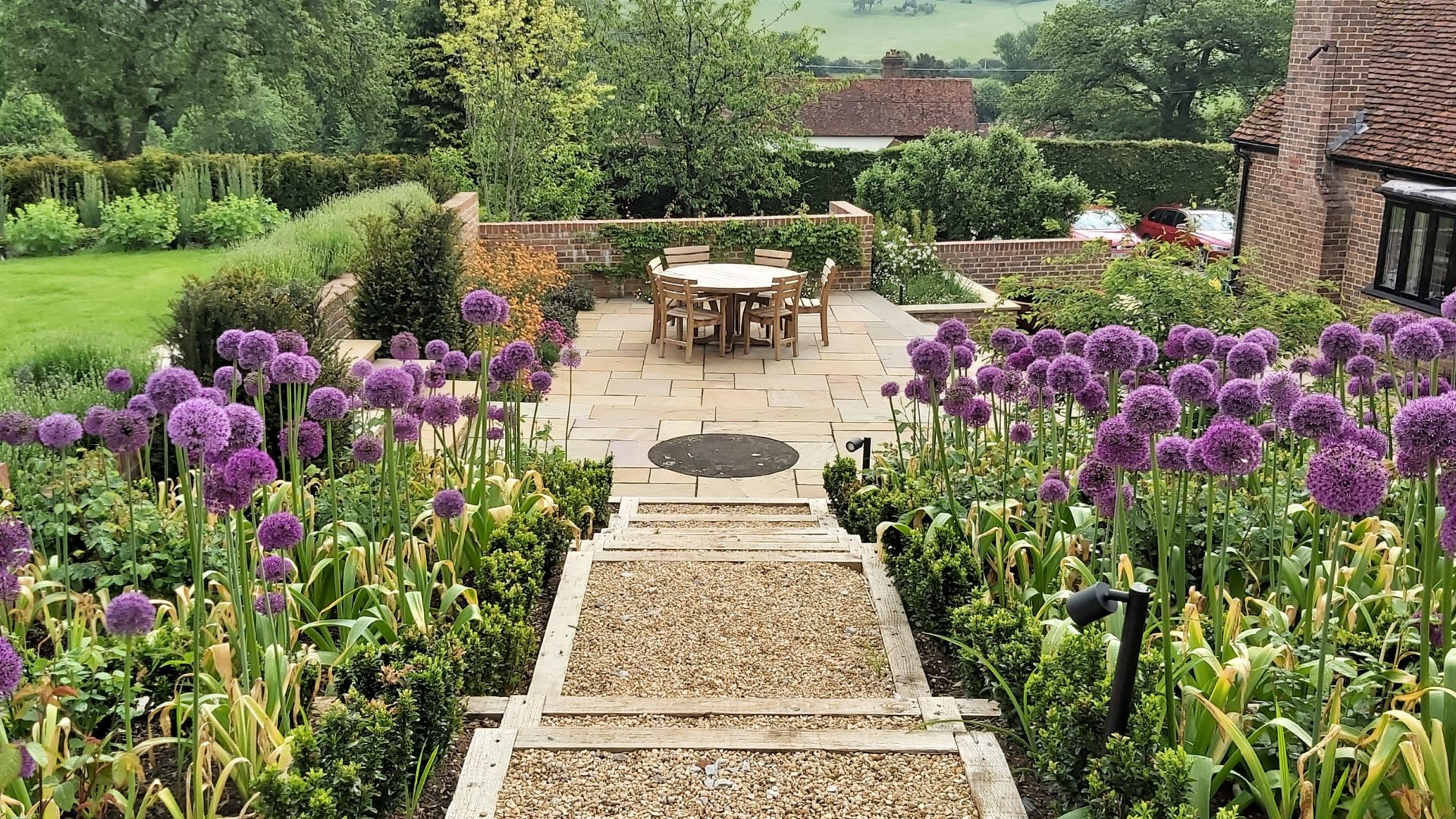
Our design team share their expertise on how to effectively plan your garden – from making the most of your space to picking the right elements to make it work together…
PLAN YOUR SPACE
Whatever size your garden, you can always make use of the space that you do have. If you have different areas to your garden, you can link individual spaces together by using smaller transitional spaces, which we call ‘pivot devices’. Using these between larger areas allows you to change the direction of the axes or the geometry of your design, and they can be celebrated in their own right with a piece of sculpture, a large pot or any other statement feature.
These can often be considered as awkward spaces within a garden, but this type of layout can also be used to keep something hidden from direct view – inviting you to go in and explore the garden further!
CHOOSING HARD LANDSCAPING
Generally speaking, we usually opt for either very large or very small format paving. Porcelain allows for large format paving, but it’s worth remembering that large stone slabs can often be difficult to move and lay, and they are unforgiving with complex ground levels. Instead, bricks and setts are a good solution for sinuous paths and areas where the levels rise and fall a lot. If you have shady areas in your garden, opt for surfaces that won’t become slippery – bricks are generally good in this respect, but timber can be treacherous!
It’s also worth considering how your hard landscaping will work with your property’s architecture. For example, if you want to create a contemporary landscape for an older or listed building, why not choose a traditional material such as brick or York stone and then use it in a contemporary way? Using simplicity and restraint in paving often achieves a sympathetic but stylish design – and avoids a pastiche.
LET THE LIGHT IN
Part of the planning process is to understand where the sunlight features in your garden and then to plan your garden around this. For example, afternoon or morning backlight can be transformative if it’s shining through grasses or tall perennials, so it’s worth considering how your planting will interact with the natural light at different times of day.
PLAN YOUR PLANTING
Of course, your planting scheme is at heart of your garden planning and should be carefully considered. Using bright spots of colour near the house, particularly early season blooms, is usually effective and brings some cheer to your immediate surroundings. When it comes to foliage, it’s often useful to break them down into different groups of textures. So large-leaved varieties could include Hosta, Cynara and Phlomis russeliana; ‘dotty’-leaved examples could include Soleirolia soleirolii and Gypsophila; spear-like leaved varieties could include Astelia, Yucca, Iris and Hemerocallis, and so on. Use simple mixtures of these foliage groups and keep the list short, adding in evergreens to create structural forms or ‘anchors’ to your scheme.
If you’re feeling inspired to develop your garden further – we’d be delighted to help with our expert team of garden designers, builders and skilled horticulturists. You can find out more here!